Introduction
Magento, a versatile open-source e-commerce platform, empowers enterprises of all sizes with dynamic and scalable solutions for creating and managing online stores. Understanding its core functionalities is essential for anyone aiming to develop custom applications. This article delves into the basics of Magento, offering insights into its key features such as robust product management, effective customer segmentation, and seamless API integrations.
It also explores the importance of choosing the right Magento 2 app builder, detailing critical factors to consider for a successful mobile app. Readers will find a comprehensive guide on the steps to create a Magento mobile app, including the integration of diverse payment methods and the significance of thorough testing before publishing. Advanced features and practical tips are discussed to help businesses stay competitive in the evolving digital landscape, ensuring their Magento mobile app meets modern e-commerce demands.
Understanding Magento Basics
Magento stands out as a versatile open-source e-commerce platform, tailored for enterprises of various scales. It offers dynamic and scalable solutions, enabling seamless creation and management of online stores. For anyone aiming to develop custom applications, understanding Magento's core functionalities is imperative.
Key features of Magento include: - Product Management: Magento excels in handling large product catalogs, offering robust tools for inventory management, pricing, and categorization. - Customer Segmentation: It allows businesses to segment customers effectively, providing personalized shopping experiences that can drive engagement and conversion. - Robust API for Integrations: Magento's API facilitates seamless integration with third-party services, ensuring adaptability and extensibility for future needs.
A testament to its capabilities, Nets, a digital payment solutions provider, leveraged Magento to manage their complex international operations. Karmela Peček, an Instructional Designer at eWyse Agency, highlighted, “One of the challenges in developing this project was trying to figure out different ways of showing all the technical data in a way that was easy to follow. Our goal was to transform all the tables and schemes into new forms that would be interesting enough to motivate users to discover information on their own.”
Magento's capabilities extend beyond conventional e-commerce, making it a strategic choice for businesses aiming to thrive in a competitive digital landscape.
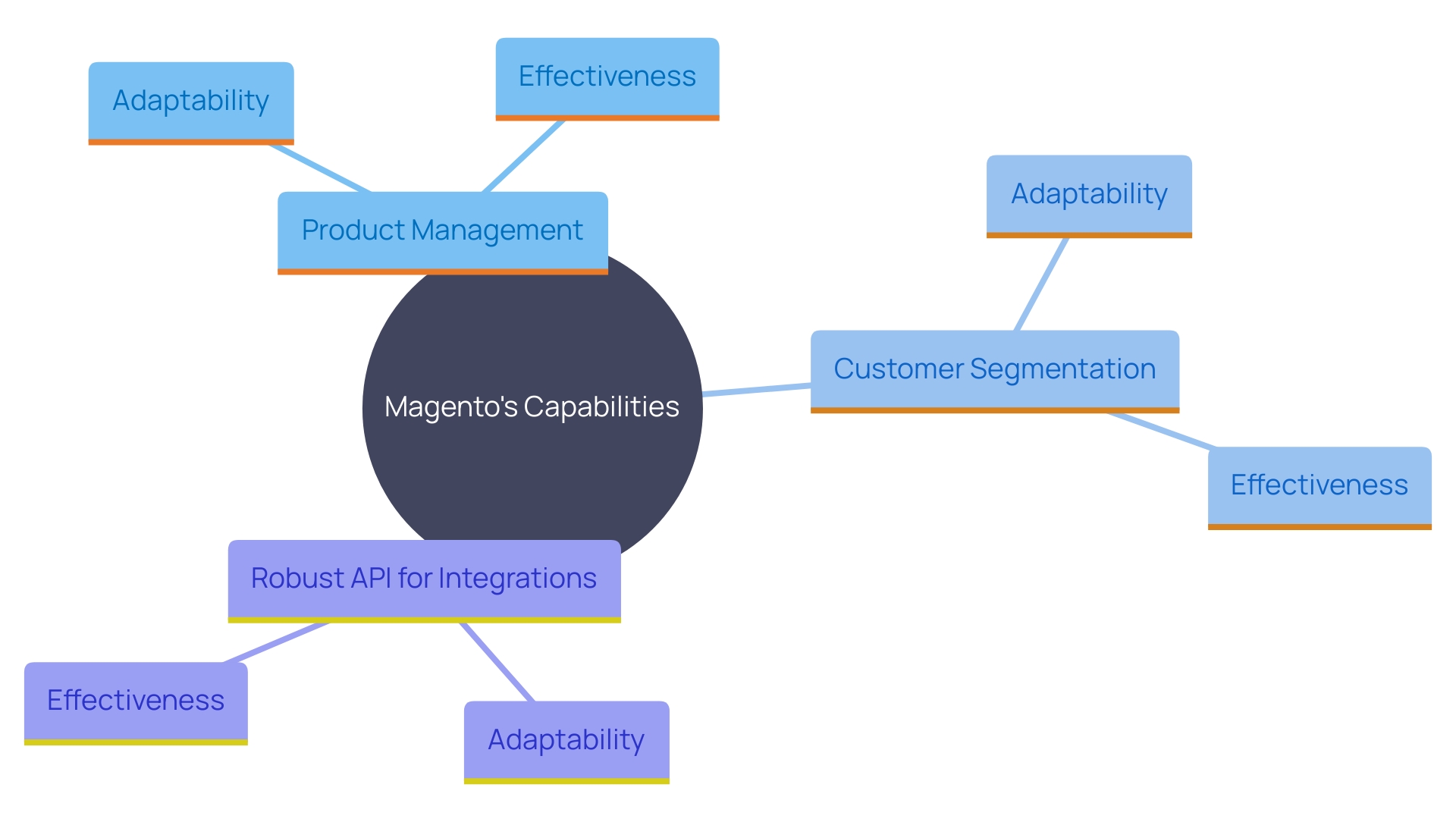
Choosing a Magento 2 App Builder
Selecting the appropriate app creator is essential for developing a successful Magento application. Prioritize a builder that offers a user-friendly interface, seamless compatibility with Magento 2, and extensive customization options. Notable choices include AppJetty, MageMob, and MobiCommerce, each offering unique features to enhance your app.
When evaluating these options, consider the comprehensive suite of features tailored to modern sales needs. For instance, AppJetty's intuitive design and extensive support make it a strong contender, while MageMob's capabilities in integrating with other tools can streamline your operations. MobiCommerce stands out for its robust customization options, allowing you to tailor the app to your specific business requirements.
User experience is essential; a well-optimized site can significantly enhance engagement and conversion rates. 'Data indicate that websites loading in two seconds or less have a 15% higher conversion rate, and 79% of individuals are more likely to return and share a site that is optimized for handheld devices.'. This underscores the importance of choosing an app builder that prioritizes performance and speed.
Additionally, consider the support and pricing models of each app builder. Comprehensive support can be a game-changer, especially when dealing with technical issues or implementing new features. The decision between building custom software or opting for off-the-shelf solutions is pivotal, and the right app builder should align with your business goals and provide the necessary tools for growth and innovation.
By carefully evaluating these factors, you can select an app builder that not only meets your current needs but also supports your long-term e-commerce strategy.
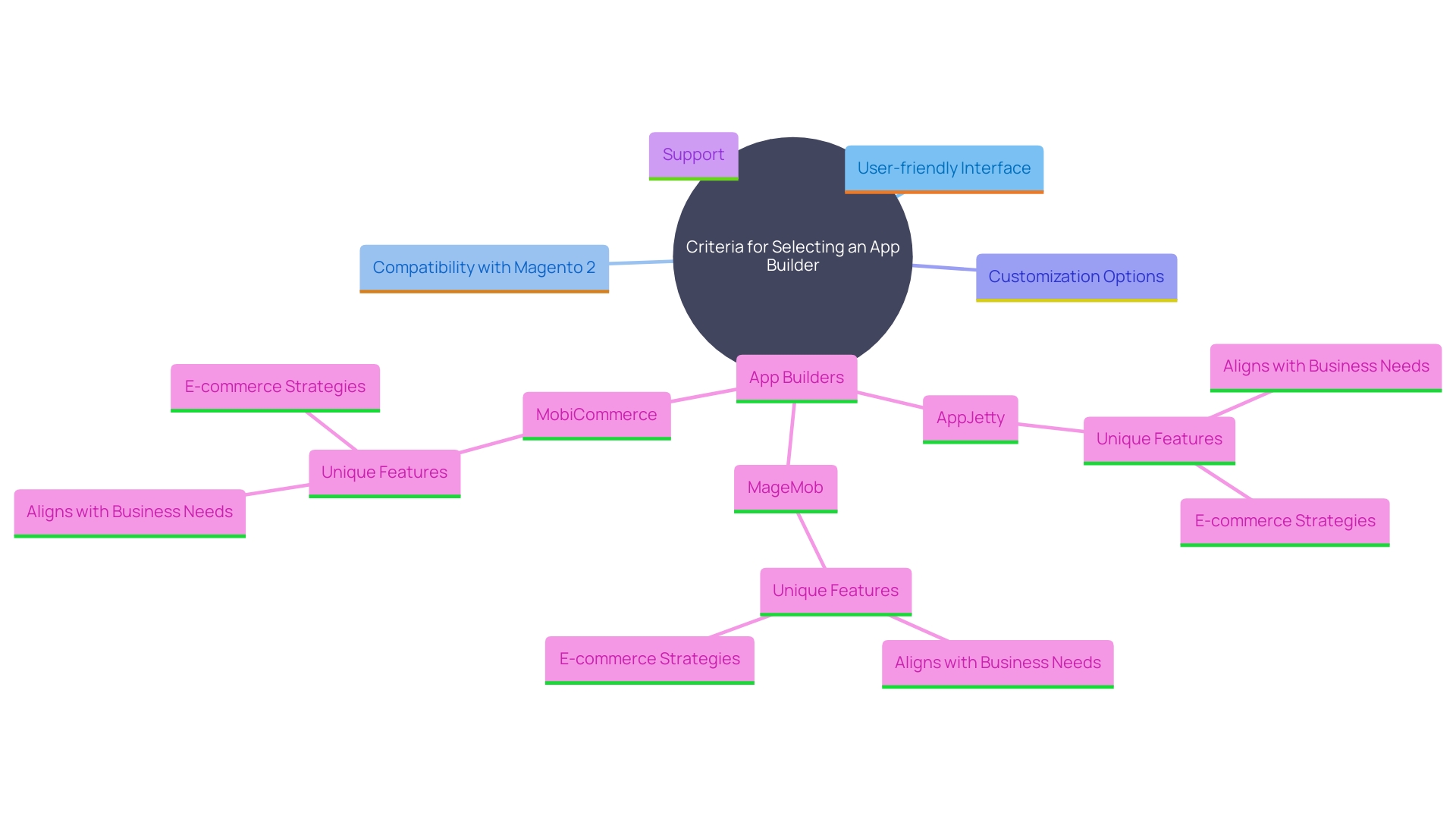
Steps to Create a Magento Mobile App
Developing an application for your Magento store involves several essential steps that can greatly influence your e-commerce success. First, clearly define your app’s purpose and target audience to ensure it meets the needs of individuals effectively. Next, choose a powerful Magento 2 app builder and follow the setup instructions carefully. Customizing the app’s layout and features to align with your brand is essential. Remember, a seamless shopping experience is paramount—this means easy navigation and fast loading times.
Grasping and enhancing user experience on portable devices is essential. Statistics indicate that over 50% of users will not think about buying from a brand with a poorly designed site for handheld devices, and sites for handheld devices loading in two seconds or less have a 15% greater conversion rate. Furthermore, 79% of individuals in the US are more inclined to return to and share a website if it's user-friendly. These figures emphasize the significance of a well-crafted application for smartphones.
To make your app stand out, consider the advantages of Progressive Web Apps (PWAs). PWAs can assist brands in reaching a broader audience and offer individuals with mobile-friendly content. They are designed to be fast, responsive, and accessible, which is critical as the majority of the mobile web is not built with accessibility in mind. Ensuring your app meets accessibility standards not only expands your audience but also adheres to regulations like the Americans with Disabilities Act (ADA).
Incorporate the latest trends and technologies to keep your app competitive. For instance, checkout-free stores are gaining traction, providing a seamless shopping experience that customers desire. By integrating such innovative solutions, you can elevate your commerce game and stay ahead in the rapidly evolving digital landscape.
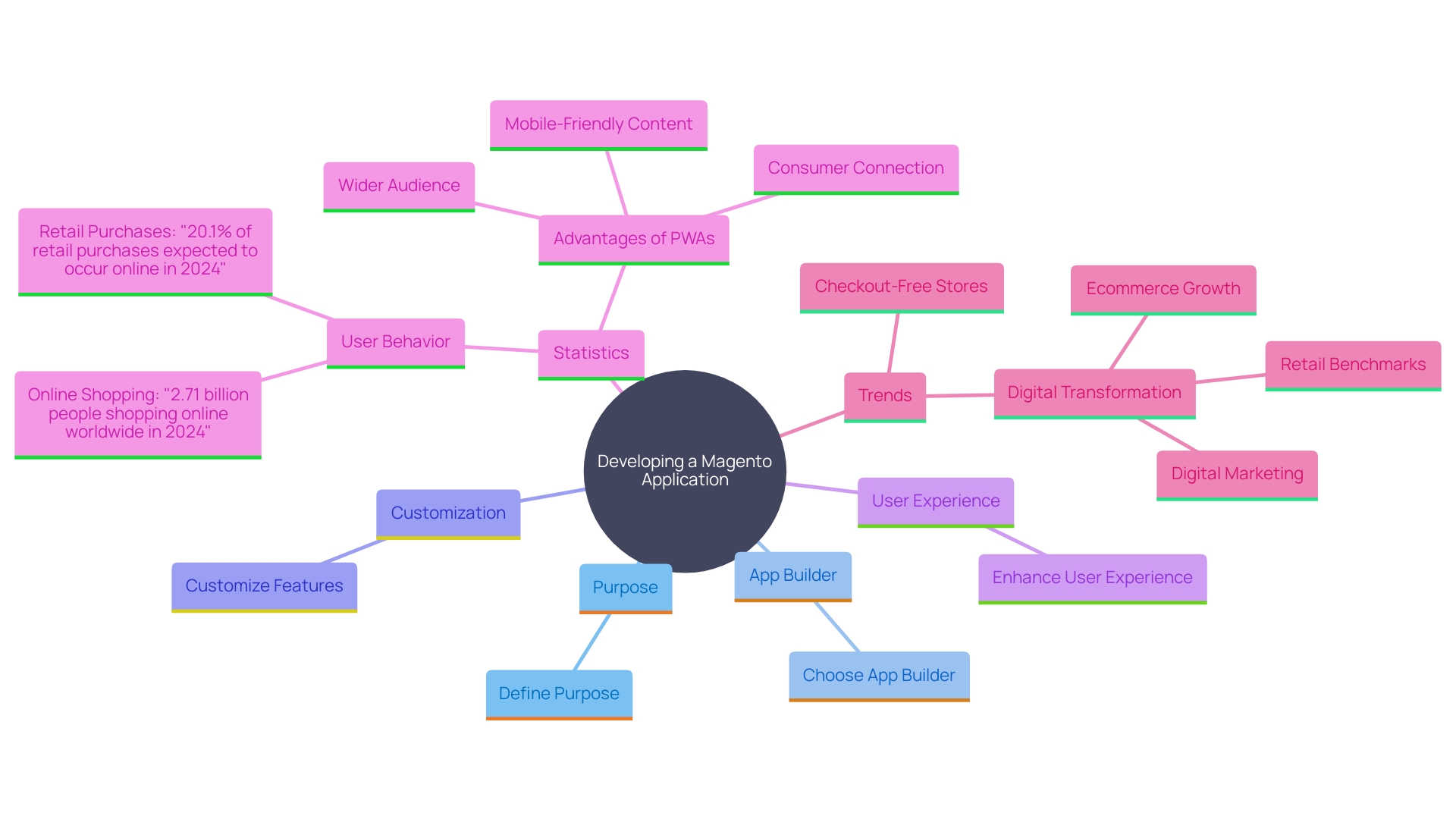
Integrating Payment Methods
Improving user experience in your Magento application requires incorporating various transaction methods. With the rise of mobile transactions, solutions like PayPal, Stripe, and Authorize. Net have become essential for facilitating secure exchanges. 'The significance of providing a range of transaction methods is emphasized by the findings from the 9th edition of WorldPay's Global Payments Report, which highlights that consumer choices are reshaping the financial landscape across 40 markets.'.
To ensure the transaction process is smooth and secure, adherence to PCI DSS standards is crucial. A successful method entails utilizing an iframe for transaction processing, establishing a secure channel between users and service providers. This method, suggested by Vercel, incorporates a form for transactions directly handled by the processor, thereby improving safety and adherence. Additionally, the growing popularity of mobile payment methods such as Twint in Switzerland shows that integrating diverse payment options can significantly enhance customer satisfaction and conversion rates.
Testing and Publishing Your App
Before launching your app, thorough testing is essential to ensure a seamless experience for individuals and robust performance. Begin by identifying and documenting both business and functional requirements that your software aims to address. This foundational step guides the entire testing process, ensuring all critical aspects are covered.
Next, conduct comprehensive testing to identify and resolve bugs, performance issues, and compatibility across various devices. As Sean Barry from Kobiton emphasizes, "Developers, testers, and interface engineers all utilize our platform to guarantee that the applications they are creating function according to their intended specifications for the final consumers." This includes not only manual and automated testing but also enhanced testing through AI to speed up the process.
Localization testing is another critical layer, ensuring that your app is culturally appropriate and functional in different regions. This includes checking language translations, date and time formats, and currency symbols to provide a seamless experience worldwide.
Acceptance testing (UAT) is crucial to gather feedback from actual participants. Matthew Heusser and Michael Larsen highlight the significance of interacting with feedback from users to enhance the overall quality and functionality of the app. After UAT, ensure security testing to identify vulnerabilities and protect customer data, fostering trust and confidence among your audience.
Once testing is complete, follow the guidelines provided by app stores like the Apple App Store and Google Play Store for submission. This includes reviewing the Apple Developer Program License Agreement and ensuring all necessary information is included to avoid delays. Emmanuel Crouvisier's experience with CardPointers underscores the importance of thorough pre-release steps and understanding the app store submission process.
After publishing, monitor reviews carefully and make updates as needed to enhance functionality. Remember, as noted in Colorado's case, adoption of updates can be slow, so continuous improvements and updates are vital to maintaining satisfaction.
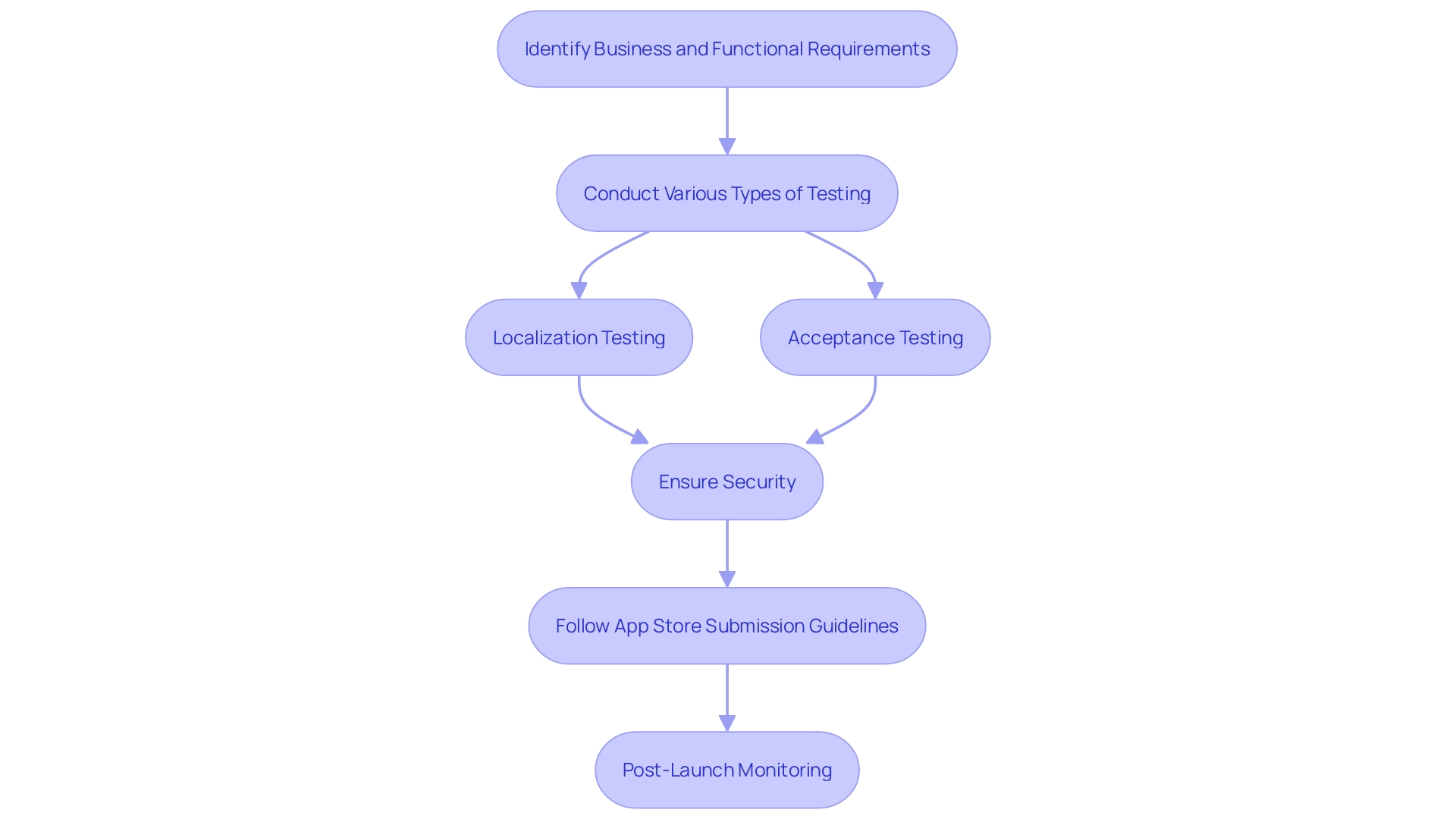
Advanced Features and Tips
In the competitive e-commerce landscape, integrating advanced features into your app can set you apart. Utilize push alerts to keep clients updated on offers and new items, similar to Spotify's approach with their podcast notifications, which has greatly boosted audience interaction. Loyalty programs are another critical tool for retaining customers, as they encourage repeat business and foster brand loyalty.
Analytics tools are indispensable for understanding visitor behavior and optimizing the customer journey. Based on a report on mobile marketing, activation performance benchmarks across sectors emphasize the significance of monitoring engagement to enhance marketing strategies efficiently. Additionally, enhancing app speed and performance is crucial; a fast and responsive app ensures users remain engaged, reducing bounce rates and improving overall satisfaction.
Incorporating these features not only improves functionality but also aligns with current trends in digital retail, where personalization and efficiency are key. For instance, the new checkout-free store at Dublin Airport leverages advanced technology to create a seamless shopping experience, demonstrating the potential of innovative solutions in retail environments.
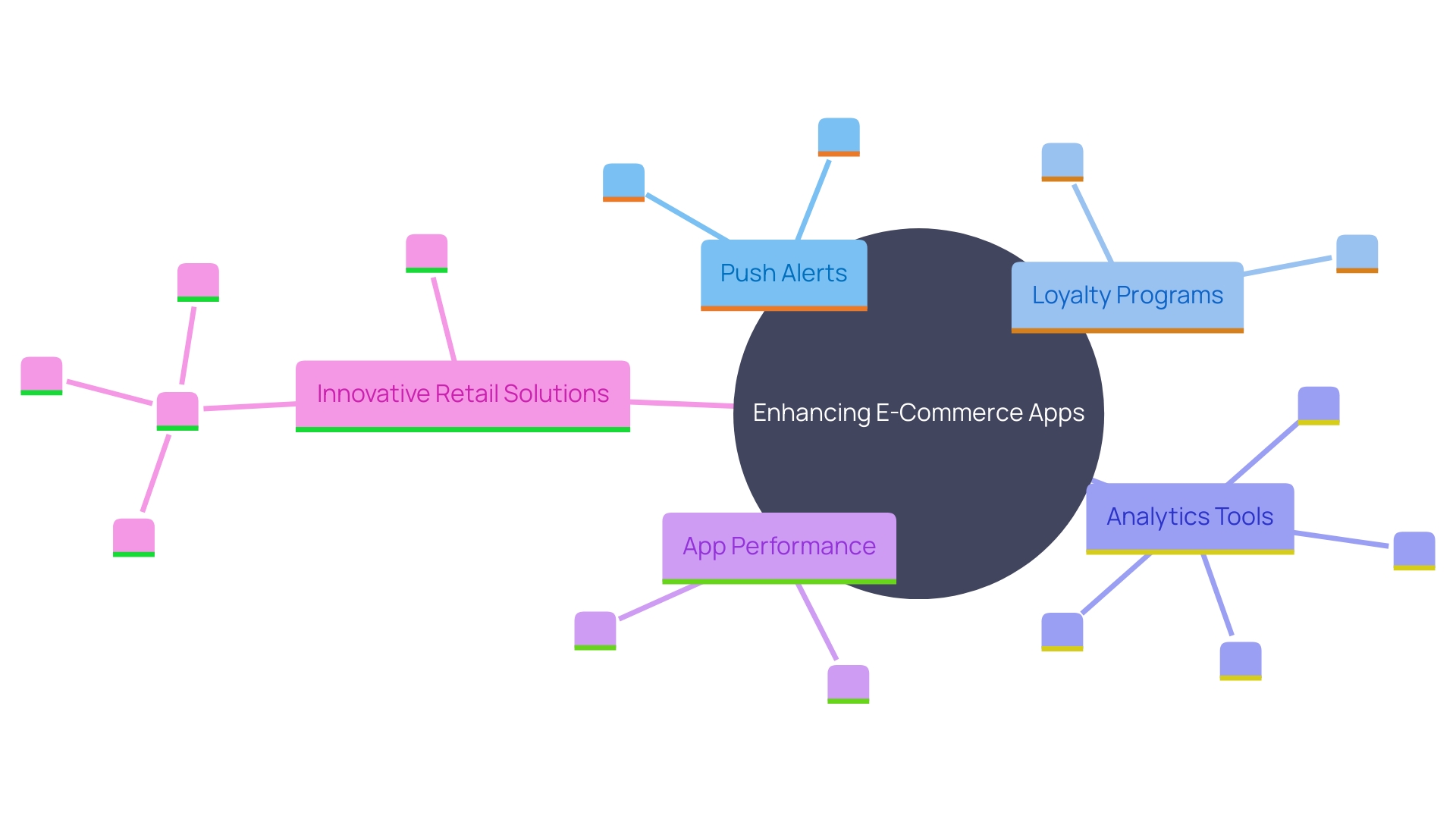
Conclusion
Magento's robust capabilities make it a powerful choice for businesses looking to establish or enhance their online presence. Understanding its foundational features—such as product management, customer segmentation, and seamless API integrations—provides a solid base for developing custom applications that cater to diverse business needs. The emphasis on selecting the right Magento 2 app builder is crucial, as it directly impacts the efficiency and user experience of the mobile app.
The process of creating a Magento mobile app involves several critical steps, including defining the app's purpose, optimizing user experience, and ensuring accessibility. Integrating multiple payment methods enhances the shopping experience, aligning with consumer preferences for secure and varied transaction options. Thorough testing before launch is essential, covering functional requirements, device compatibility, and user acceptance to ensure a seamless experience for users.
Incorporating advanced features such as push notifications, loyalty programs, and analytics tools can significantly enhance user engagement and retention. As the digital landscape continues to evolve, businesses that prioritize innovation and adaptability will be better positioned to thrive in the competitive e-commerce market. By leveraging Magento's capabilities and following best practices in app development, businesses can effectively meet modern consumer demands and drive long-term growth.





